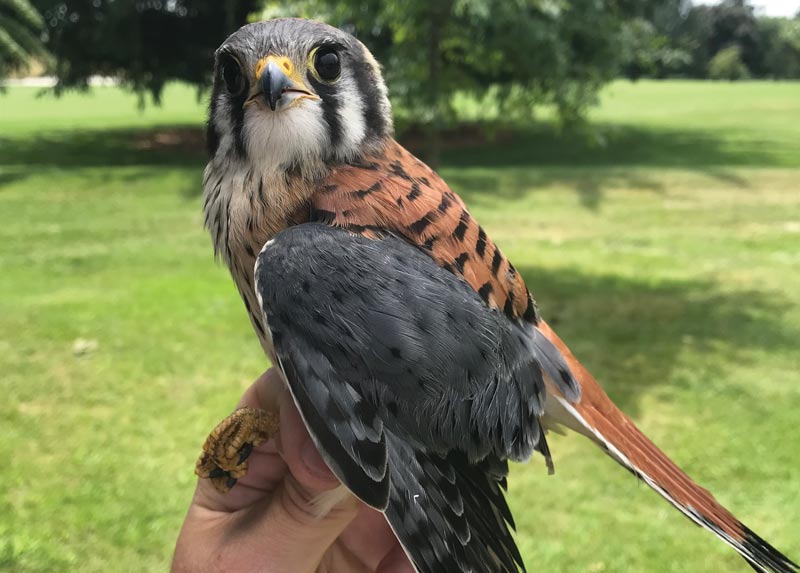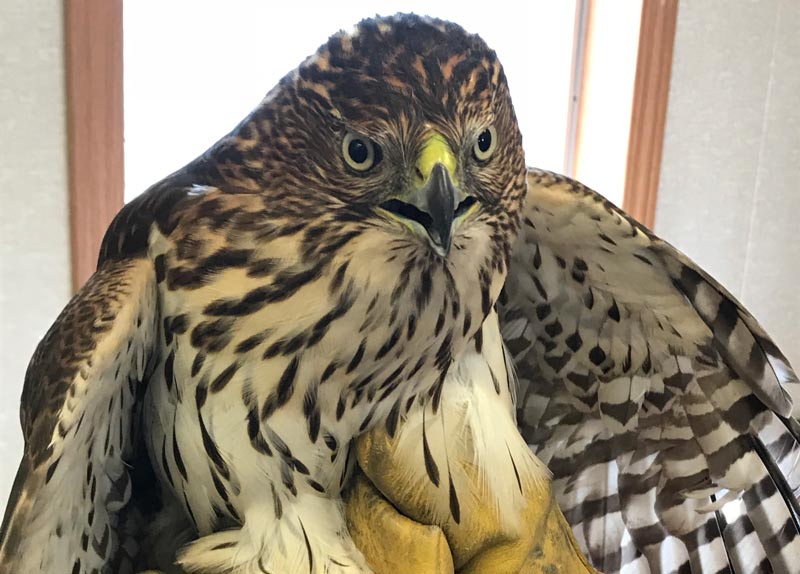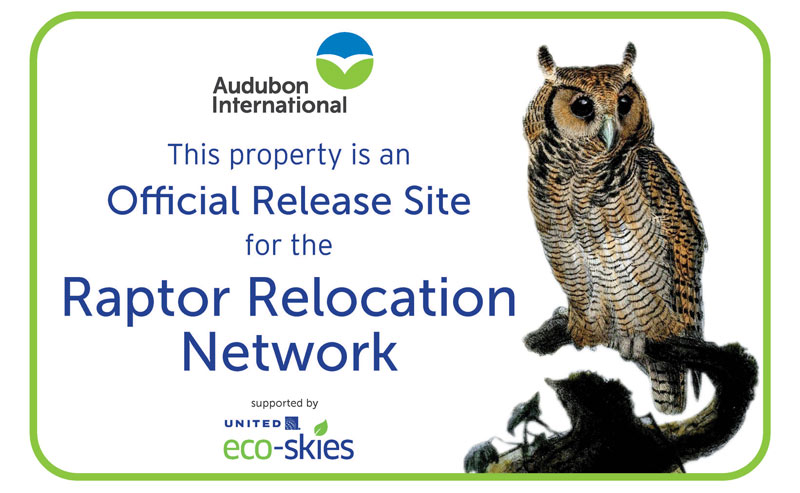
Raptors — like this American kestrel — caught at any of the five Port Authority of New York and New Jersey airports might now be relocated to a golf course that’s a member of the Raptor Relocation Network. Photos courtesy of the Port Authority of New York and New Jersey
Golf courses often go to great lengths to be environmentally friendly.
Initiatives small and large — from planting a discreet pollinator garden to massive solar installations — can entail countless labor hours and hundreds, or hundreds of thousands, of dollars.
And then there’s the Raptor Relocation Network.
“There’s really not a lot we have to do on our end,” says Chris Boyle, CGCS, superintendent at Mendham Golf and Tennis Club in Mendham, N.J., and a 24-year GCSAA member. “It’s not a burden at all.”
“Really, there’s no negative impact,” adds Ryan Tuxhorn, superintendent at nearby Somerset Hills Country Club in Bernardsville, N.J., and a 14-year association member. “I don’t see why anyone wouldn’t want to take part in it.”
The Raptor Relocation Network, a partnership between Audubon International and the United Airlines Eco-Skies program, began as a way for wildlife managers to relocate trapped raptors — falcons, hawks and owls — from New York-area airports to golf courses that are part of the Audubon certification programs. Relocation sites must be at least five miles from an airport of any size, and a minimum of 15 miles (for smaller birds of prey) or 30 miles (for larger raptors) from a major airport.
“In this area of New Jersey,” Tuxhorn says, “that’s difficult to do with all the airports around.”
The network launched in the summer of 2017 and already is expanding. Audubon International in May announced plans to take the network west — initially to six courses that would serve as relocation sites for raptors, primarily barn owls and red-tailed hawks, captured at San Francisco International Airport. The RRN’s West Coast debut is expected this month, and Audubon CEO Christine Kane says ultimately the organization would like to expand the network nationwide.
“That,” Kane says, “is the goal.”
Boyle has been on board from the start.
He’s well acquainted with Matt Ceplo, CGCS, superintendent at Rockland Country Club in Sparkill, N.Y. Ceplo, a 33-year GCSAA member and winner of the 2013 President’s Award for Environmental Stewardship, is treasurer of Audubon International. When Audubon and United conceived of the RRN, Ceplo quickly thought of Boyle.
“Matt knows we’ve got a very active bird program here at our club, with bluebirds and purple martins,” Boyle says. “He thought it might be something I might be interested in.”
Boyle quickly learned just how low-maintenance participation would be. One afternoon, workers built a handful of nesting boxes suitable for American kestrels, affixed the boxes to trees … and the course was ready for its first relocated raptor.

This Cooper’s hawk was caught at a New York airport and has found a new home through the Raptor Relocation Network.
Audubon deemed Mendham and Somerset Hills to be good relocation sites for American kestrels.
“We have acres and acres and acres of fine fescue,” Tuxhorn says. “Kestrels love that.”
And airport wildlife managers love to find ways to keep them away from the runways. It seems birds colliding with aircraft can be as costly as it is dangerous.
The Federal Aviation Administration reported 193,969 wildlife strikes with civil aircraft in the U.S. between 1990 and 2017, and 187,343 of those involved birds. Of those bird strikes, 14,374 were characterized as damaging. Combined cost of all damaging strikes: more than $765,000,000.
Doves/pigeons made up 14% of the strikes, followed by raptors (13%), gulls (11%), shorebirds (9%) and waterfowl (5%). Waterfowl were to blame for the greatest number of damaging strikes. Canada geese were ID’d as the culprits in the 2009 emergency landing of US Airways Flight 1549 in the Hudson River, the so-called “Miracle on the Hudson.”
Though kestrel populations are on the decline in the Northeast — they’re listed as “threatened” in New Jersey — they are the most frequently struck species at Newark and Teterboro airports. Those two airports, plus JFK, LaGuardia and Stewart, fall under the Port Authority of New York and New Jersey, which traps, bands and relocates the birds within 24 hours.
There are nine Raptor Relocation Network golf course release sites in New York and New Jersey (see list of sites below). Each designates a “citizen scientist” to help monitor the birds. If said scientist (or an eagle-eyed superintendent) spies a relocated raptor, they report it to Audubon, which maintains an interactive map of sites and subsequent sightings.
However ...
“I can’t get close enough, and they don’t sit long enough, even through a 400-power spotting scope ... I’ve never been able to see a band,” Boyle says. “I think some of these birds have started to call this place home, but I can’t say for sure. Before we started the program, it was very rare that I’d see a kestrel on the property. I’ve seen 30 or more in the last two years.”
“We have had a handful of sightings,” Tuxhorn echoes. “Unfortunately, they’re not the easiest thing to see. And I’m focused on the ground. I’m always looking down, not looking up.”
Raptor Relocation Network sites

New York
Manhattan Woods Golf Club, West Nyack
Mohonk Golf Course, New Paltz
Pine Ridge Golf Club, Coram
Rockland Country Club, Sparkill
Sunken Meadow State Park Golf Course, Kings Park
New Jersey
High Bridge Hills Golf Club, High Bridge
Mendham Golf and Tennis Club, Mendham
Somerset Hills Country Club, Bernardsville
Spring Lake Golf Club, Spring Lake
Andrew Hartsock is GCM’s managing editor.